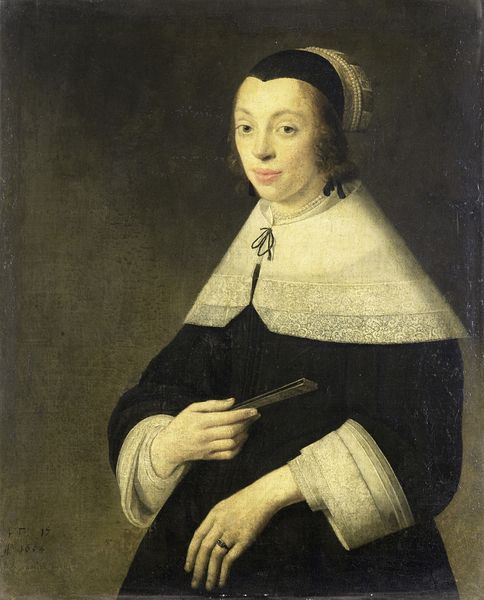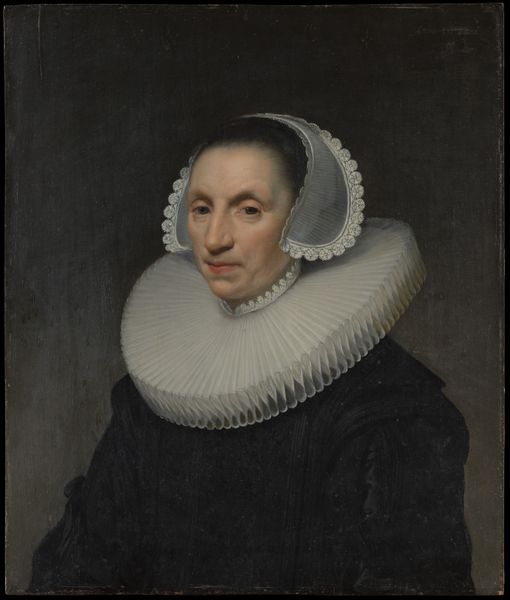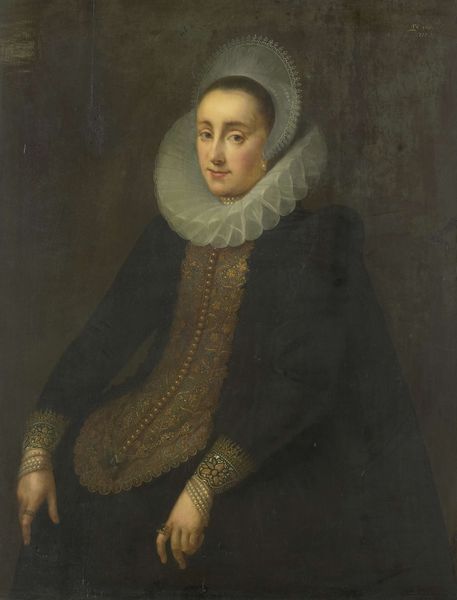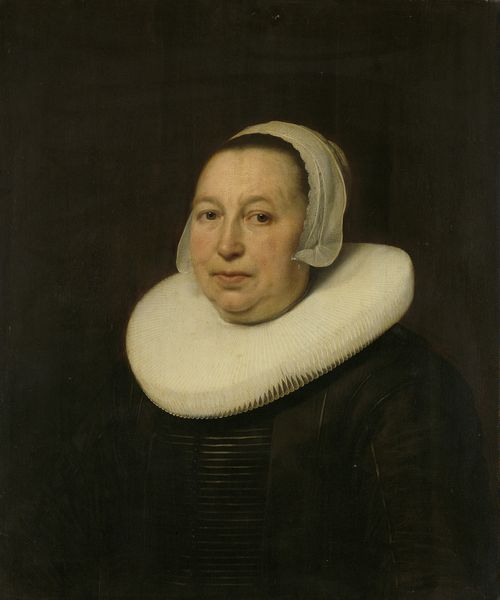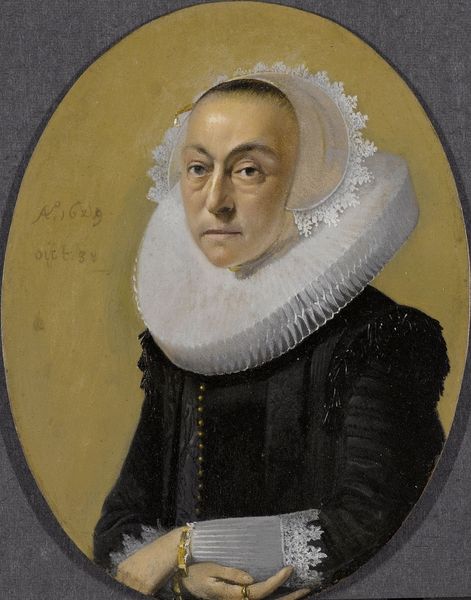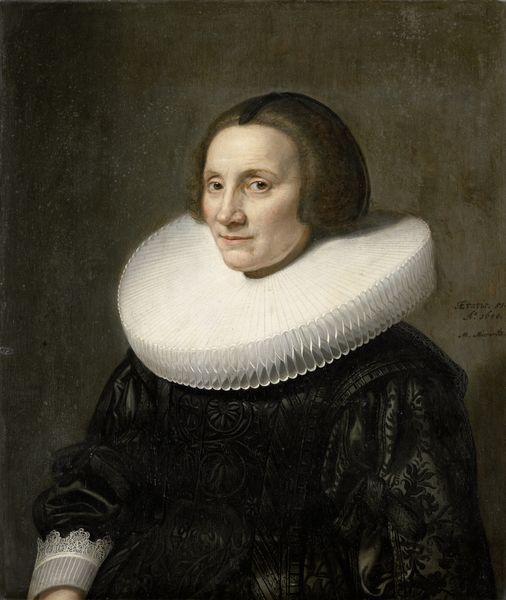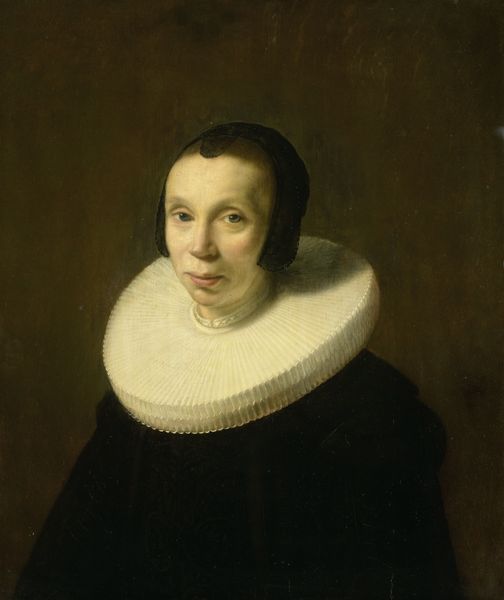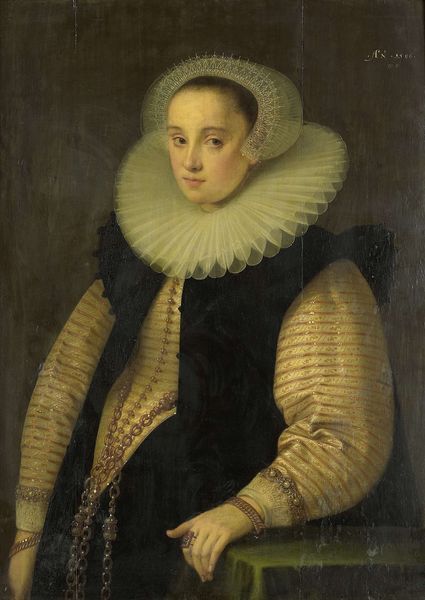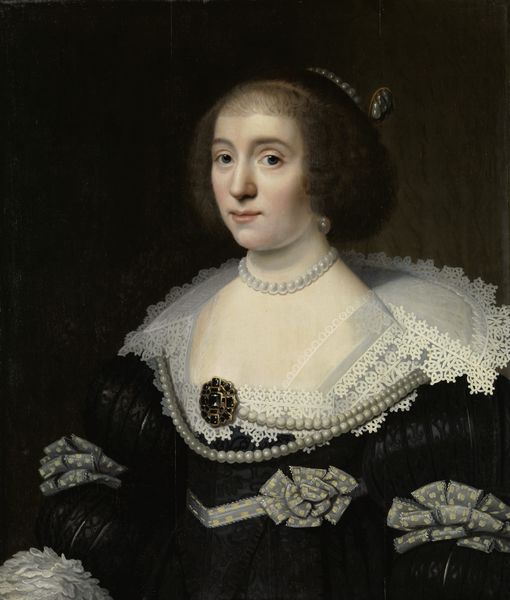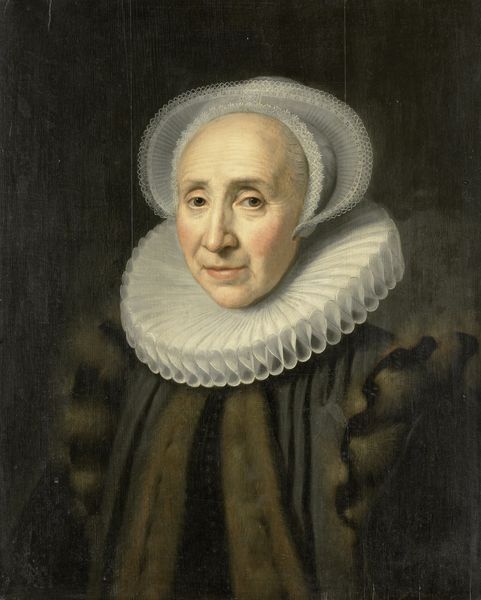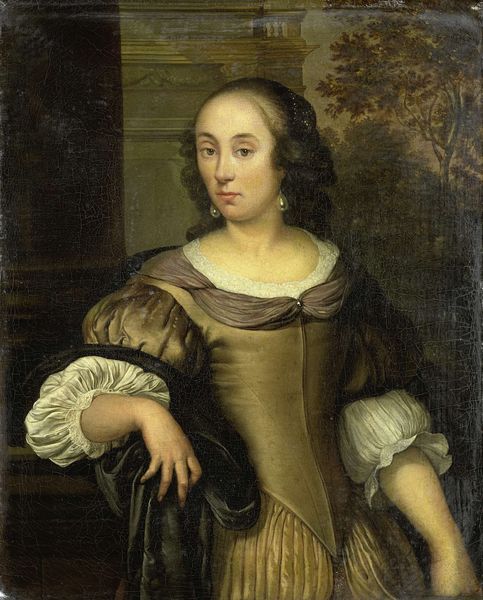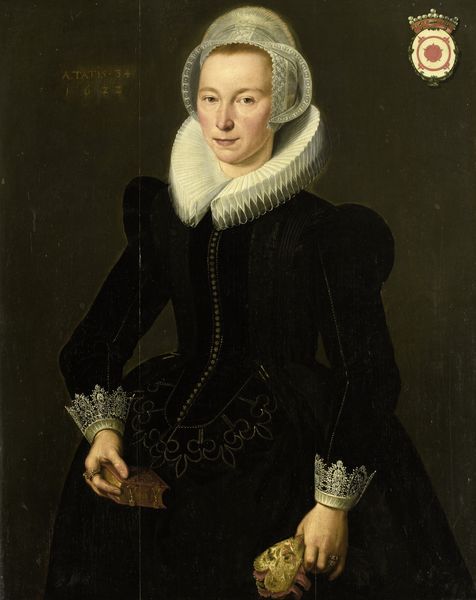![['Portrait of a Woman, possibly Helena le Maire (1602 ?-after 1657)', 'Portrait of a Woman'] by Pieter Dubordieu](/_next/image?url=https%3A%2F%2Fd2w8kbdekdi1gv.cloudfront.net%2FeyJidWNrZXQiOiAiYXJ0ZXJhLWltYWdlcy1idWNrZXQiLCAia2V5IjogImFydHdvcmtzLzg0ZTE5MTM1LWYyZjMtNDk2YS1hZmRlLTM2MzkwZjllMWMxMS84NGUxOTEzNS1mMmYzLTQ5NmEtYWZkZS0zNjM5MGY5ZTFjMTFfZnVsbC5qcGciLCAiZWRpdHMiOiB7InJlc2l6ZSI6IHsid2lkdGgiOiAxOTIwLCAiaGVpZ2h0IjogMTkyMCwgImZpdCI6ICJpbnNpZGUifX19&w=3840&q=75)
['Portrait of a Woman, possibly Helena le Maire (1602 ?-after 1657)', 'Portrait of a Woman'] 1638
0:00
0:00
painting, oil-paint
#
portrait
#
baroque
#
dutch-golden-age
#
painting
#
oil-paint
#
genre-painting
#
academic-art
Dimensions: support height 76 cm, support width 60.6 cm, outer size depth 7 cm
Copyright: Rijks Museum: Open Domain
Curator: Standing before us is a work attributed to Pieter Dubordieu, titled "Portrait of a Woman, possibly Helena le Maire," created in 1638 with oil paints. Editor: The portrait's immediate impression is one of constrained elegance. The colour palette is very subdued with sharp lines. She looks quite…contained, almost captured within the elaborate geometry of that enormous ruff. Curator: Let’s consider how the painter has meticulously rendered that ruff. Notice how the radiating lines draw the eye inexorably to her face, employing contrast as both frame and stage. It’s a display of technical prowess, yes, but the structural weight amplifies the delicacy of her features, and emphasizes a subtle melancholic emotional state. Editor: I can see what you mean, the composition definitely emphasizes her. But thinking about women in 17th century Dutch society... wealthy women were often defined and confined by social expectations of piety and domesticity. Could that ruff, that very structure you praise, actually symbolize the restrictions placed upon women of her class? A sort of gilded cage constructed by societal norms? Curator: Interesting suggestion. Though isn't that very structure the key to interpreting her social standing? Look at the detail on the patterned dress, the jeweled ring, the delicate lace. These aren't just status symbols, but compositional elements, each carefully placed within the pictorial space to signal class and privilege, as well as her inherent grace. Editor: Yes, the material signifiers of wealth are undeniable and help explain her station. Still, consider her gaze; her eyes reflect a sense of resignation, perhaps. The blackwork embroidery she holds adds a somber tone. Dubordieu was working during the Dutch Golden Age when debates about a woman’s role in public and private life intensified. Can we ignore this contextual tension when interpreting her portrait? Curator: Perhaps not ignore it. But also, look at how Dubordieu deploys a limited tonal range to emphasize textures—the stark contrast of the ruff against her darker garments. Her facial expression is definitely subtle; a controlled and quiet sensibility that enhances the work. The essence, it's about restraint, refinement, compositional brilliance, it is the painting, not necessarily what she is facing. Editor: It’s an exquisite portrayal that invites layered readings that bridge history, gender and artistic style, ultimately expanding and opening conversations about our world. Curator: Leaving us with an intricate tapestry that celebrates formal excellence while provoking our thoughts to reflect upon a life of bygone days, so gracefully represented.
Comments
No comments
Be the first to comment and join the conversation on the ultimate creative platform.
